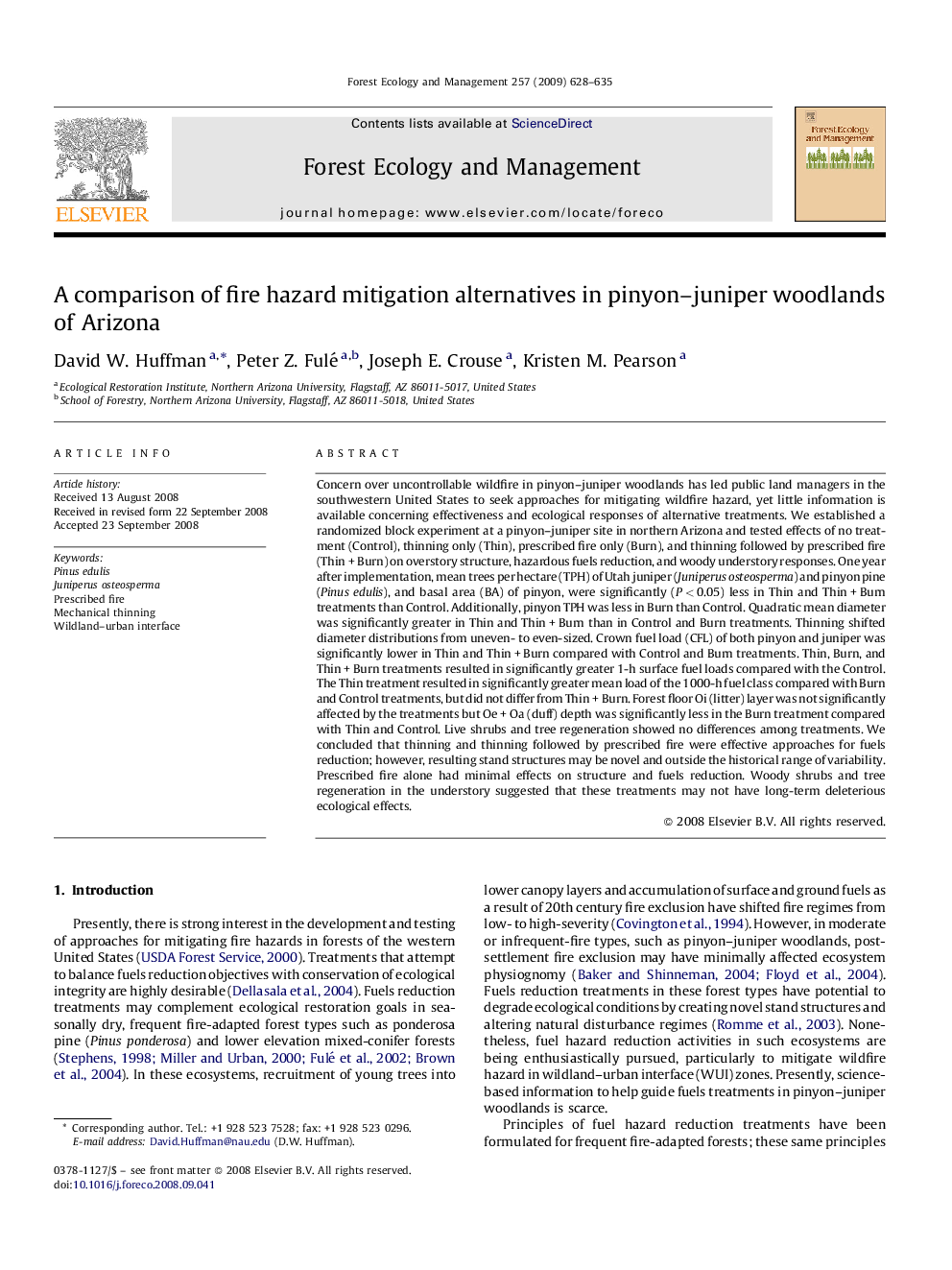| کد مقاله | کد نشریه | سال انتشار | مقاله انگلیسی | نسخه تمام متن |
|---|---|---|---|---|
| 89286 | 159337 | 2009 | 8 صفحه PDF | دانلود رایگان |

Concern over uncontrollable wildfire in pinyon–juniper woodlands has led public land managers in the southwestern United States to seek approaches for mitigating wildfire hazard, yet little information is available concerning effectiveness and ecological responses of alternative treatments. We established a randomized block experiment at a pinyon–juniper site in northern Arizona and tested effects of no treatment (Control), thinning only (Thin), prescribed fire only (Burn), and thinning followed by prescribed fire (Thin + Burn) on overstory structure, hazardous fuels reduction, and woody understory responses. One year after implementation, mean trees per hectare (TPH) of Utah juniper (Juniperus osteosperma) and pinyon pine (Pinus edulis), and basal area (BA) of pinyon, were significantly (P < 0.05) less in Thin and Thin + Burn treatments than Control. Additionally, pinyon TPH was less in Burn than Control. Quadratic mean diameter was significantly greater in Thin and Thin + Burn than in Control and Burn treatments. Thinning shifted diameter distributions from uneven- to even-sized. Crown fuel load (CFL) of both pinyon and juniper was significantly lower in Thin and Thin + Burn compared with Control and Burn treatments. Thin, Burn, and Thin + Burn treatments resulted in significantly greater 1-h surface fuel loads compared with the Control. The Thin treatment resulted in significantly greater mean load of the 1000-h fuel class compared with Burn and Control treatments, but did not differ from Thin + Burn. Forest floor Oi (litter) layer was not significantly affected by the treatments but Oe + Oa (duff) depth was significantly less in the Burn treatment compared with Thin and Control. Live shrubs and tree regeneration showed no differences among treatments. We concluded that thinning and thinning followed by prescribed fire were effective approaches for fuels reduction; however, resulting stand structures may be novel and outside the historical range of variability. Prescribed fire alone had minimal effects on structure and fuels reduction. Woody shrubs and tree regeneration in the understory suggested that these treatments may not have long-term deleterious ecological effects.
Journal: Forest Ecology and Management - Volume 257, Issue 2, 31 January 2009, Pages 628–635